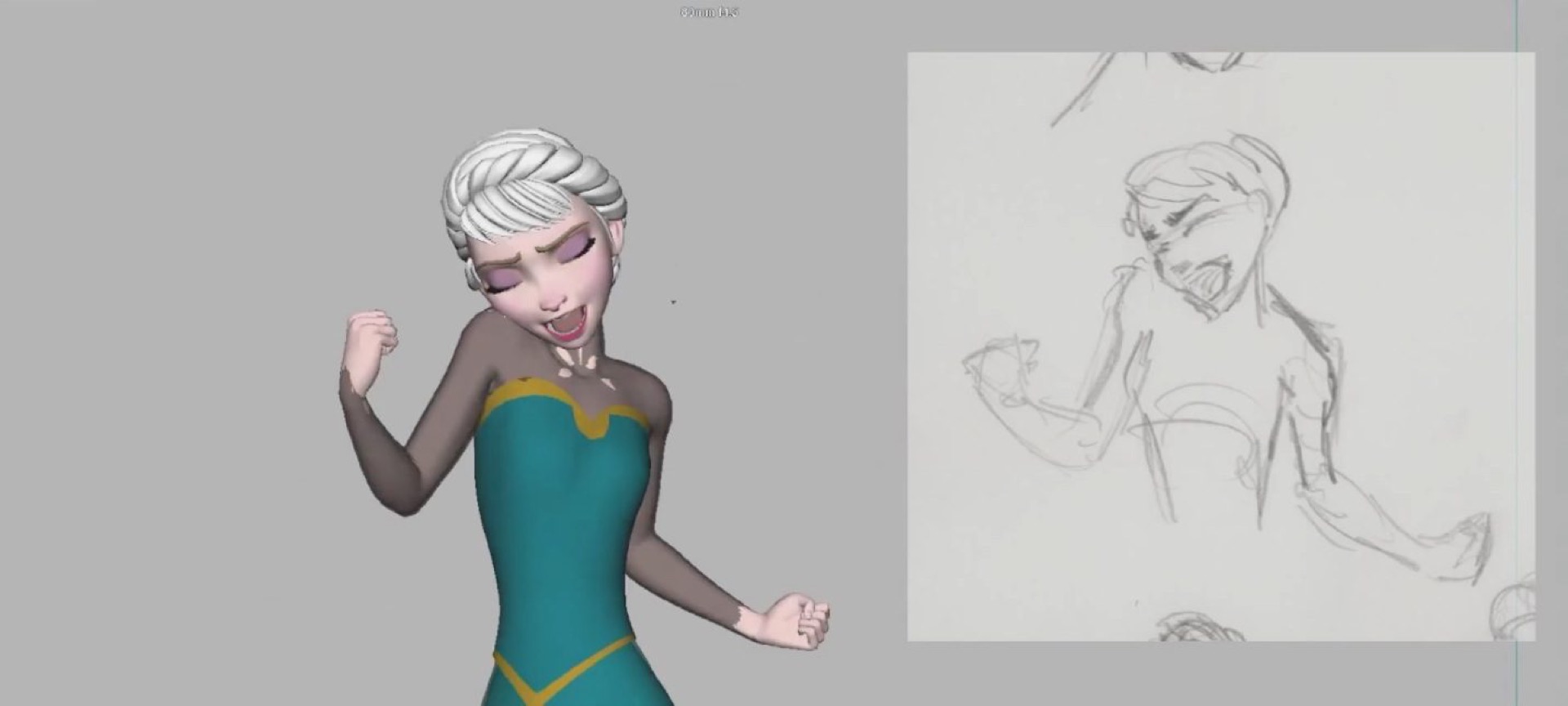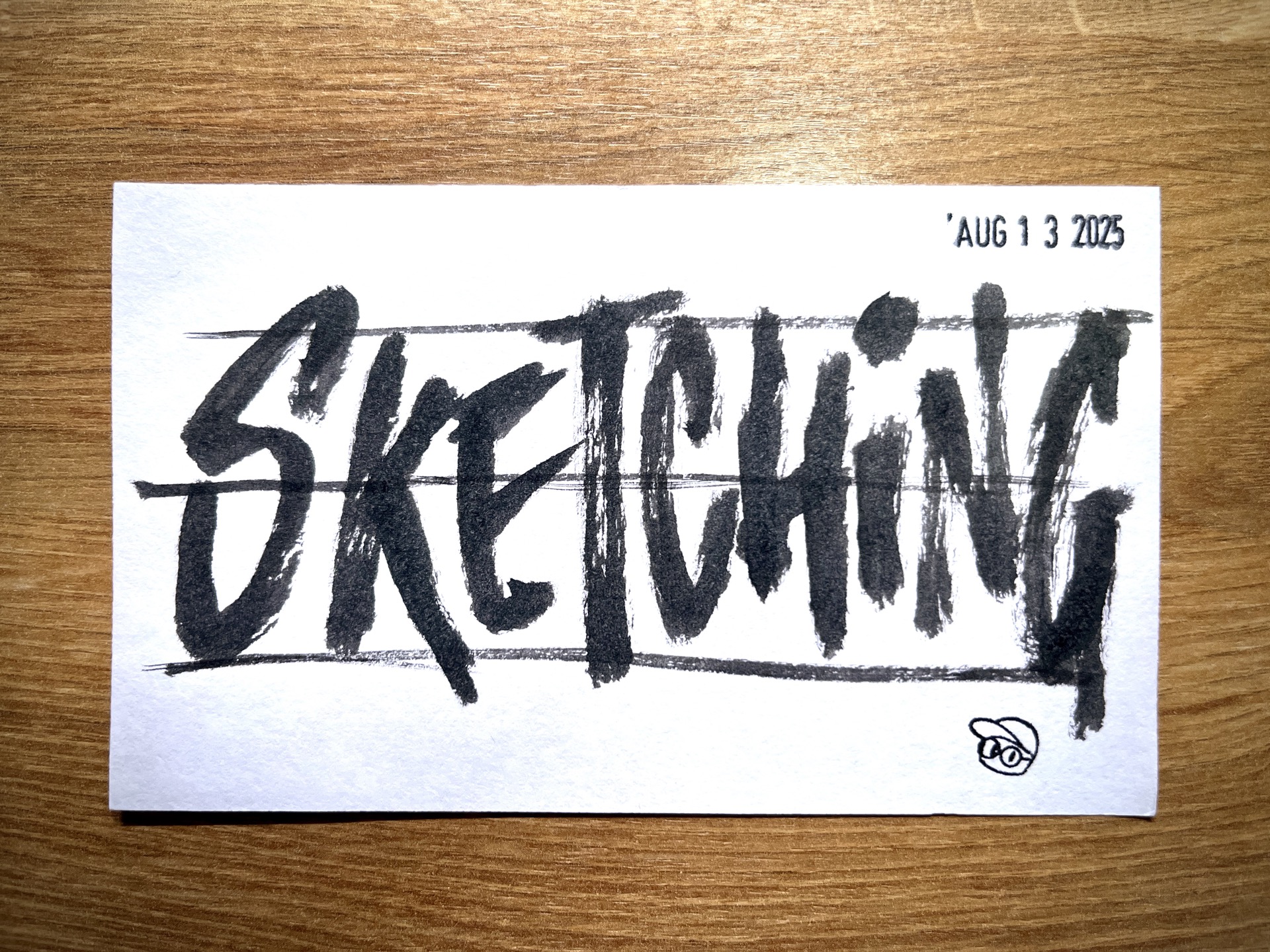I’ve always been into art — specifically, drawing. As far back as I can remember. Five-year-old me was glued to Saturday morning cartoons and the animated movies my parents would rent from Blockbuster (or Rogers Video — the Canadian equivalent). Characters came to life on our old CRT screen, powered by VHS tapes that hissed when you hit rewind.
Drawing
I’d try to draw those characters. Sometimes tracing, sketching, and doodling the artwork from the the usually colorful and sometimes pillowy VHS covers.
I dreamed that one day I’d work at a big-name animation studio. Maybe even the Walt Disney Company (can you imagine that). I’d design characters that could wiggle, dance, and fly across the big screen.
Somewhere along the way, I decided to get serious. Copying characters poorly wasn’t enough. I needed to learn how to draw. And in doing so, I also learned how to sketch.
I didn’t know it then, but that skill — not just drawing, but sketching — would follow me through every chapter of my career. It’s still one of those quiet principles I use every single day.
Roughing
For me, sketching is about roughing something in. Finding the shape and the dimensions. Drafting. Prototyping. It’s something to get you started, but not the real deal. Not ready for prime time.
It’s fast, fuzzy pencil lines that suggest a shape, not define it. It’s the kind of drawing that carries an unspoken forgiveness — it invites the viewer to fill in the blanks with imagination and a little squinting. It’s not perfect. Not even close. And that’s by design.
These days, I sketch all the time — but my sketches look different than they used to. Instead of Mickey Mouse or Goku from Dragon Ball, I’m scratching out mind maps. Roughing out checklists for projects. Scaffolding ideas I might want to explore. Writing quick, messy code just to see if an idea works. Recording a many mini Loom updates to walk people through a concept. Recognizing that it’s not about the medium, but the mindset that counts.

Scaffolding
If you’ve ever seen how animated films are made, you know most of the process looks like this — rough, incomplete, still taking shape. 3D Playstation 2 looking models that appear awkwardly smooth. Whole teams live in that stage for months.

Everything feels like a work in progress. We’re defining the thing as we go. Scaffolding potential and possibility. And only once we truly understand what it is and what it should be do we start polishing. That’s when the energy shifts to making it feel amazing. That’s when the thing comes to life.
Understanding — and embracing — sketching matters because it breaks the illusion (and the pressure) that your first one, two, ten, or fifty attempts have to be perfect. That you should somehow one-shot everything.
Mastering
Sure, there are exceptions.
There’s an artist named Kim Jung Gi — a master known for drawing entire, intricate scenes from memory with permanent ink. No rough lines, no undo button. Just brush pen, imagination, and magic.
He’d stand in front of a massive blank canvas and, without hesitation, start placing lines in exactly the right place. Vehicles, buildings, people — all perfectly proportioned, all connected, all alive. Watching him work felt like watching someone develop a photograph in real time.
His “sketches” are what most of our finished pieces wish they could be.
I first discovered Kim Jung Gi through an interview he did on YouTube, and I remember feeling two things at once: total inspiration and total disbelief. Inspiration, because it showed me what’s possible when skill and imagination meet. Disbelief, because I couldn’t comprehend how someone could hold so much detail in their mind and execute it without a single misstep.
(Warning: Artwork contains nudity)
Very few of us are Kim Jung Gi. I’m nowhere close. And that’s OK!
Moving
Sketching isn’t just a step you check off before the “real” work starts. It’s the process that reveals what the real work even is.
Every loose line, every rough pass, every messy draft — that’s the scaffolding holding up the final piece before it can stand on its own. Without it, there’s nothing to polish. Nothing to perfect.
Sketching isn’t the thing before the thing. Sketching is the thing that makes every other thing possible.
It’s where the vision takes shape. Where ideas connect. Where the gaps appear. It’s the place where you can still move fast, take risks, and change direction without fear.
Most of our work will live in that stage — and that’s not a flaw. That’s the nature of making anything worth making.
The point isn’t to cosplay as a demigod with a brush pen — the point is to keep moving. Line by line. WIP WIP WIP.
